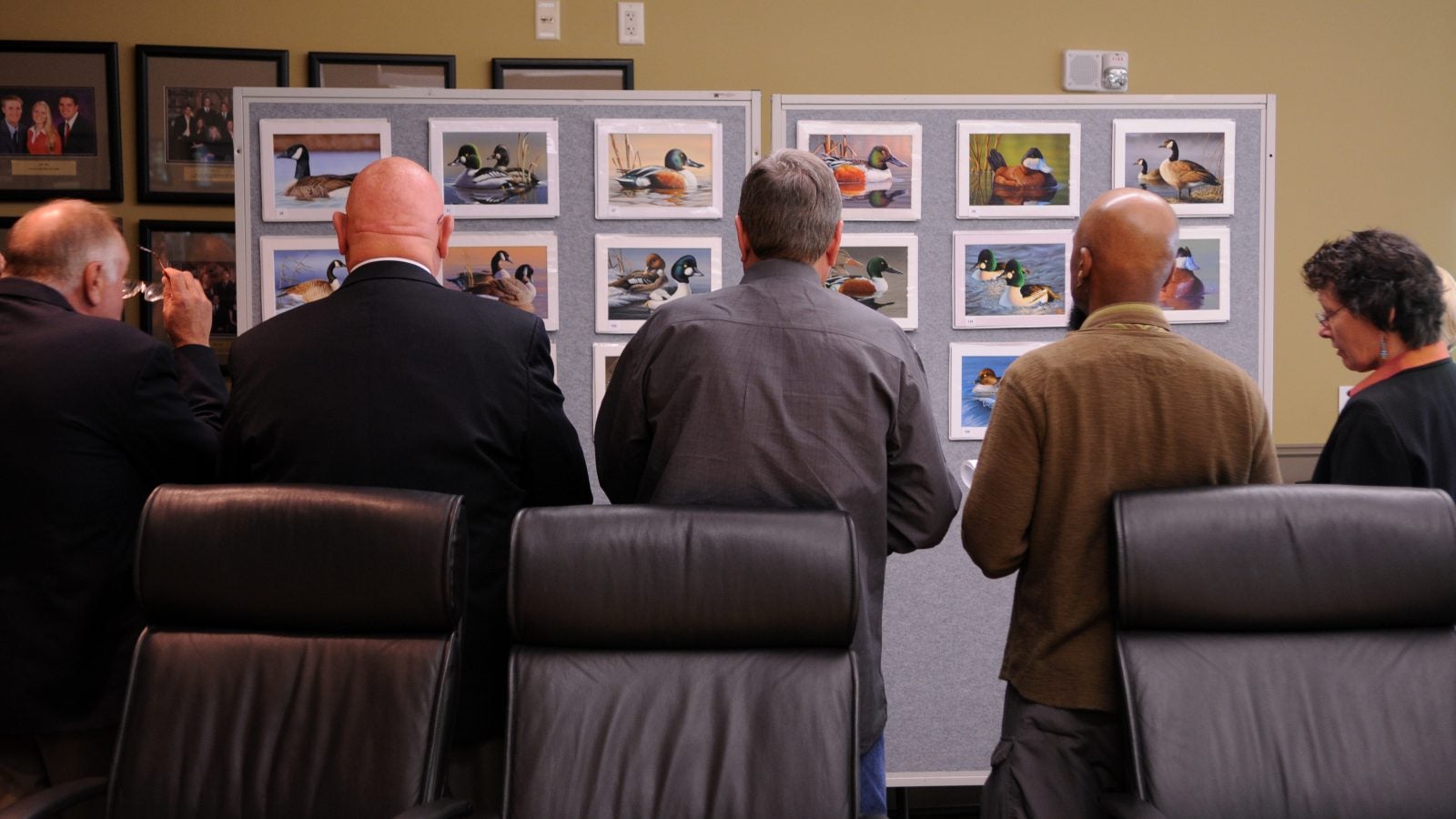How a duck painting contest launched in 1949 gained a cult following in America today
For actors it’s the Oscar, for musicians it’s the Grammy, but for wildlife artists it is the federal Duck Stamp Contest. The US Fish and Wildlife Service on Sept. 10 once again chose a winner for a competition where artists each year frantically paint ducks, geese and swans for the sole hope of gracing a stamp.


For actors it’s the Oscar, for musicians it’s the Grammy, but for wildlife artists it is the federal Duck Stamp Contest. The US Fish and Wildlife Service on Sept. 10 once again chose a winner for a competition where artists each year frantically paint ducks, geese and swans for the sole hope of gracing a stamp.
Signed into law by president Franklin D. Roosevelt in 1934 as a way to fund wetland conservation, the Duck Stamp is a federally issued $25 sticker that sportsmen are required to paste onto their hunting licenses if they wish to shoot waterfowl. Since 1949 the Fish and Wildlife Service has held a contest for anyone over 18 to design the next year’s Duck Stamp. Some 200 people, enthusiasts of art, birds, conservation and hunting, enter the contest, attempting to paint the perfect duck (or goose). A panel of five art, waterfowl and stamp authorities evaluate each 7″ by 10″ entry based on the accuracy of the bird, its habitat and composition and whether it’s suitable to be shrunken into a 1.75″x 1.5″ stamp.
For wildlife artists, getting your bird on the stamp makes you a superstar. During the early years, waterfowl were portrayed in simple, monochromatic line drawings, but nowadays artists submit anatomically perfect birds in vivid colors down to the last feather. The rules require that artists pick from only five species chosen each year by the government–this year it was the Canada goose, brant, northern shoveler, red-breasted merganser and Steller’s eider. (Next year, the mallard, gadwall, cinnamon teal, blue-winged teal and harlequin duck are up for portraits.) There’s no money for getting your stamp chosen, but artists can earn anywhere from $80,000 to $300,000 from licensing fees and limited-edition prints.
Artists spend a lifetime learning how to paint the perfect duck. New York state resident Jennifer Miller, who won in 2014 for her pair of ruddy ducks, visited national parks, a wastewater plant, and an ornithology lab to educate herself on duck anatomy. In the beginning, she even froze a couple of different duck species and used them for models. Her love for the birds and nature started as a child when she accompanied her father on hunting trips every winter and summer. Before entering the federal Duck Stamp Contest in 2010, she had summited many ducks to state contests. Her winning ruddy ducks took her six months to paint.
The Leonardo da Vincis of the Duck Stamp, however, are the Hautman brothers of Minnesota. This year, James Hautman of Minnesota won his fifth Duck Stamp Contest, with three flying Canada geese. Often referred to as the “New York Yankees of competitive duck painting,” James, Joseph and Robert Hautman have together won 12 of the last 28 Duck Stamp competitions. So famous are they that they are referred to in 1996’s classic movie Fargo–made by their childhood friends and neighbors, the Coen Brothers.
Money raised from hunters buying the Duck Stamp does go for the birds. Some 98% of every purchased stamp is used for buying and protecting wetland habitats; in the last 82 years, the Duck Stamp has generated $850 million for wildlife conservation, although that may be small consolation to the ducks that end up on the dinner table of duck hunters. The stamp also doubles as a ticket to any national wildlife refuge charging an entry fee, making it possible for those who don’t hunt ducks to support conservation.
Though only one duck–or two geese this year–will get turned into a stamp, take a look at the three most stampable birds out of 152 contestants in 2016: